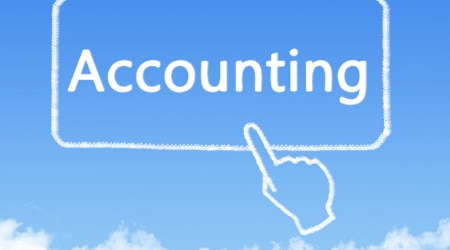In this article, you will learn:

What Are the Signs of Insolvency in Small Business?
You as a business owner have to deal with a number of challenges while managing your business. Two of the primary challenges include an unsteady stream of cash flows and unexpected fluctuation in the operating costs of business.
Such unanticipated challenges make it difficult for you to manage the liquidity of your business. Thus, the efficiency with which you manage liquidity is one of the primary reasons for your business to thrive.
Also, you have to recognize issues early when they arise and cope with challenging times. One such challenge is business insolvency.
Thus, it is clear that running a business is rarely simple. Furthermore, its growth is not linear. So, it is important to understand the difference between a temporary decline and a terminal decline in business growth.
Thus, you should be aware of the declining liquidity position of your business. Furthermore, you should also know the point where formal insolvency is the only alternative for your business.
So, the awareness of such dangers from a very early stage would help you to take early actions.
In this article, you will learn what is insolvency, when is a company insolvent, insolvency tests, and the consequences of insolvency.
What is Insolvency?
Insolvency is a situation when you as an individual or a company do not have the ability to meet your financial obligations. These obligations arise when they become due to your creditors and other business lenders.
Thus, business insolvency means a condition of financial distress that results from a decrease in cash flow, an increase in expenses, or poor cash management skills. In such a situation you can either enter into casual arrangements with your creditors directly. Or restructure your debt via formal insolvency proceedings.
In case of insolvency proceedings, legal action would be taken against you as an insolvent person or a business entity. Furthermore, your business assets would be used to discharge your outstanding liabilities.
However, say you choose to enter into informal arrangements with your creditors. In such a case, you can pay off your debts in a more convenient manner. In fact, your creditors are more comfortable in restructuring debt repayments informally. This is because they want to get repaid, even if you pay over a longer duration.
Types of Insolvency
There can be two types of insolvency. These are as follows.
- Cash Flow Insolvency
Cash flow insolvency occurs when you as an individual or a business entity have enough assets to pay off your creditors. However, you as a debtor lack cash on hand. In other words, you have sufficient assets to pay off lenders.
But do not have the appropriate form of payment. This means that cash flow insolvency is a situation when your business has insufficient liquid assets to meet its fixed obligations.
You can resolve such a situation by negotiating repayment terms with your lenders.
- Balance Sheet Insolvency
Balance Sheet Insolvency is a situation when you do not have sufficient assets to meet financial obligations. Such a situation may lead your business towards bankruptcy. However, negotiation can also help to resolve the situation. Provided all the stakeholders accept the loss.
It is important to note that you might have sufficient cash to pay your short-term bills in case of balance sheet insolvency. However, the legislative law of insolvency would not allow you to pay those bills. Provided such repayments help all business creditors or lenders.
When is a Company Insolvent?
You as a company undergo insolvency when you are:
- reasonably unlikely to pay your debts as they fall due and become payable within the next six months
- likely to become insolvent within the next six months
The first part indicates there is an increased likelihood of your inability to pay debts as they become due. Provided you reach such a state within the next six months. Here the term ‘Increased Likelihood’ means that you must have sufficient evidence to conclude that you would not be able to pay debts within the next six months. You can obtain such evidence by analyzing the current financial position of your business.
Besides this, you must consider all the appropriate factors that can impact your business’s liquidity in the near future.
The second part deals with insolvency. Here, the challenge arises whether this term refers to commercial or factual insolvency. You must understand that there are two views on insolvency.
The first one deals with the factual or balance sheet insolvency. And the other deals with commercial insolvency.
Balance Sheet Insolvency
The balance sheet insolvency approach considers a situation where your business’s liabilities exceed its assets. This approach does not take into account any other management action.
That is, this approach would not showcase the financial position of your business serving the best interests of all the stakeholders. These stakeholders include all the affected parties like creditors, employees, and shareholders.
Commercial Insolvency
The commercial insolvency view states that you should consider the rehabilitation of the company and its recovery. Such a recovery should be in a way that the rights of all the relevant stakeholders are equally taken care of.
Say you are factually insolvent. That is your business’s liabilities exceed its assets. In such a case, you would not be considered as insolvent as per the commercial insolvency view. Even if you are factually insolvent.
This is because you will consider the complete financial position of your business in commercial insolvency. That is, you will not consider just the liabilities exceeding the assets as in the case of the balance sheet insolvency view.
What are the Signs of Insolvency?
As a business owner, it is essential to be aware of the warning signs of insolvency. This is because it allows you to address the issues that may be impacting the viability of your business. Furthermore, it would also help you to seek appropriate advice on time.
The earlier you will take action to solve the issues of insolvency, the better would be the result. Now, there are three different phases of the warning signs of insolvency.
- Early Warning Signs
You will be able to resolve the issues threatening your business viability in the best possible manner. Provided you recognize and act upon the early warning signs of insolvency. These signs typically get displayed when your business starts experiencing financial challenges. Such early warning signs include:
- inability to pay suppliers debt as per the trade terms occasionally
- using cash reserves set aside for paying GST etc to meet temporary cash shortages
- the decrease in expenses like stationery, maintenance, etc to maintain profitability
- using personal credit cards to meet business expenses
- weakening relationship with banks
- inability to obtain finance from banks due to an increased risk of insolvency
- increased worry about the financial situation of your business
- increased trading losses, eating away your working capital
- slow or no collection from debtors resulting in temporary cash flow shortages
- Substantive Warning Signs
The substantive warning signs signify that your business has been facing serious cash flow challenges. These signs indicate that you need to address such cash flow shortages on an immediate basis. Thus, the substantive warning signs include the following.
- inability to obtain finances from alternative sources
- suppliers not advancing trade credit to your business or asking you to deal on cash-on-delivery terms
- inability to prevent making payments outside trade terms, cheques getting dishonored, issuance of post-dated cheques, etc
- negotiation of payment plans formally with suppliers to secure ongoing supply
- inability to pay superannuation on time
- a decrease in employee numbers to save costs
- neglecting communications with creditors
- finance managers raising concerns about financial distress
- inability to prepare accurate financial statements and having a lack of records
- increasing worry about family or marital issues due to financial distress
- denying that your business is facing financial difficulties
- Critical Warning Signs
Critical warning signs indicate that the winding up of your business is unavoidable. Hence, your business needs to consider formal insolvency solutions. One of the significant critical warning signs is when creditors wait for your business situation to improve. Further, they start off with the formal recovery process to obtain their payments.
Hence, the critical warning signs include the following.
- creditors’ lawyer demanding payments legally
- initiating court action to recover payments from your business
- your business receiving a summon for the possession of the property
- notices pertaining to bankruptcy or creditors statutory demands being issued against your business
- secured creditors demanding possession of your business assets
- initiation of winding-up proceedings or creditors filing petitions against your business
How Do I Check if My Company is Insolvent?
It is essential that your business meets the standards for commencing insolvency proceedings. Typically, your company turns out to be insolvent when:
- it is unable to pay its debts when they become due
- the total liabilities of your business exceed the total value of its assets
Accordingly, your business can undertake two tests whether your business is insolvent.
- Cash Flow Test
The liquidity, cash flow, or general cessation of payments test is typically used before the commencement of the insolvency proceedings. Such a test indicates that you have stopped making payments to creditors.
Furthermore, you do not have sufficient cash flows to meet the financial obligations in the ordinary course of business. There are various indicators that signify that you have stopped making general payments. These indicators include failure to pay:
- rent and taxes
- employees salaries and benefits
- trade accounts payable
- other essential business expenses
Furthermore, the cash flow test is put in place to initiate the insolvency proceedings quite early. This helps to minimize the dissolution of your business assets and avoid creditors running after your assets. Thus, such a standard allows your business to initiate insolvency proceedings only when your business’s balance sheet demonstrates insolvency.
That is when the value of your business liabilities exceed the value of its assets. Such a test would help you to delay insolvency which is inevitable and diminish recoveries. As a business owner, there is a caveat while using the cash flow test to check for insolvency.
Your business’s inability to pay debts as they become due may only point towards only a temporary cash-flow problem. This situation can occur when you are forced to work at lower profits or losses due to competition for a temporary period.
You undertake such a step to become competitive or maintain your market share. Therefore, you need to follow the insolvency law guidance to determine whether the cash flow test has been met or not.
- Balance Sheet Test
Another test that indicates the financial distress of your business is the Balance Sheet Test. The Balance Sheet Test examines whether the total value of your business liabilities exceeds the total value of its assets. One of the fundamental shortcomings of the balance sheet test is that it makes use of the financial information that is under your control.
This makes it challenging for the outside parties to determine the true picture of your financial position. Furthermore, the outsiders are unaware of your financial position until your financial challenges become irreversible.
Thus, the balance sheet test may give a misleading indication of your business’s financial situation. This is because such a test only focuses on the accounting valuation of assets. Furthermore, it also raises doubt about the reliability of your business’s balance sheet and your ability to pay its creditors.
Particularly it does not indicate the fair market value of your business assets. Especially if you have a service-oriented business. In addition to this, the balance sheet test may also cause a delay as an accounting professional would require time to review your books. And determine the fair market value of your business.
Therefore, for the above-mentioned reasons, this test initiates the insolvency proceedings once the possibility of reorganization has disappeared. This can have a negative impact on your ability to deal with the creditors collectively. Thus, it is important to note that the balance sheet alone may not be a reliable measure to test for insolvency. Therefore, it must always be used with the cash flow test.
Insolvency and Business Recovery Procedures
There comes a stage where formal insolvency procedures have to be initiated. In such a case, the primary objective of the directors and insolvency practitioner is to derive the greatest value for your business’s creditors.
The best option is to come up with a solution while keeping your business operating. However, this depends upon the stage at which your business realizes that it is in financial distress. Accordingly, there can be two possibilities.
Either your business can continue to operate and generate cash for its creditors. Or you can sell your business as a going concern. It is important to note that businesses sold as ongoing concerns gain much higher realizable value relative to the liquidated value. Thus, such a step offers the greatest returns to your business’s creditors.
The following are the various insolvency and recovery procedures keeping in mind the above considerations.
- Company Voluntary Arrangement
Company Voluntary Arrangement (CVA) is a process that allows your business to put forth a proposal in front of your creditors. Such a proposal allows you to either:
- pay only a proportion of the outstanding amount to settle the debts
- enter into some other arrangement with the creditors over the payment of its debts
You must note that a CVA can be implemented only when your creditors approve the CVA proposal agreed by them. For instance, a CVA may include capital restructuring, delayed or reduced debt payments, or logical disposal of assets.
For your understanding, the CVA approval requires at least 75% of your creditors to vote in favor of such a proposal. Therefore, the CVA is legally binding on your company and its creditors once approved. It is irrespective of whether the creditors vote in favor of the CVA proposal or not.
This means that a CVA prevents a creditor to take any steps against the company that violates the terms of the CVA. Furthermore, this arrangement is under the control of an insolvency practitioner who acts as a supervisor. This means that the court’s involvement is limited in the case of a CVA.
- Administration
Administration is a procedure through which your business may be reorganized. Or its assets may be realized along with a moratorium. Such a procedure places your business under the control of an insolvency practitioner and the protection of the court. The insolvency practitioner must try to achieve the following three objectives laid down by the law.
In addition to this, he also has the power to remove or appoint directors. Furthermore, the administrator may also. He may also dismiss the board of directors from performing their management function.Besides this, the administrator is also required to prepare proposals. These proposals then need to be approved by your creditors. Thus, the entire process of administration needs to be completed within one year.
However, your creditors or the court may extend this time period. This is in case more time is needed to achieve the purpose of administration. However, the administration process may come to an end when the administrator believes that its purpose has been achieved. Or it cannot be achieved.
Consequences of Administration
The consequences of administration may include your company being:
- returned to the control of its directors and management
- liquidated
- dissolved
- company voluntary arrangement
- Administrative Receivership
Typically, your bank or other lending institution appoints the administrative receivers. Provided such a bank has a part or whole of your company’s property as a security for the loan under a floating charge. Your bank gets the power to appoint administrative receivers only when:
- your business is in default or
- you breach the borrowing terms
You must note that the charge is mentioned in a document known as a debenture. The debenture will also include fixed charges on certain assets. Also, the lender would be referred to as the debenture holder.
Now, an administrative receiver has powers similar to that of the administrator as mentioned above. Thus, the administrative receiver can continue to operate your business. And realize your business assets as a going concern.
However, he does not have any power to deal with the claims of your unsecured creditors. Therefore, a separately appointed liquidator has the power to distribute funds to the unsecured creditors. This is when such funds become available.
- Liquidation
Liquidation is a procedure through which your business assets are realized and distributed to your creditors. All this is done by a liquidator. A liquidator is typically an insolvency practitioner. Now, there are two modes via which liquidation takes place.
- Compulsory Liquidation
A compulsory liquidation initiates when a court issues a winding-up order. The court prepares such an order as a result of a creditor of your company filing a petition.
- Voluntary Liquidation
Voluntary liquidation is a non-court based procedure to liquidate your company. Either the members or creditors of your company initiate such a liquidation process voluntarily.
Now, a voluntary liquidation can be either Member’s Voluntary Liquidation (MVL) of solvent companies. Or Creditor’s Voluntary Liquidation.













